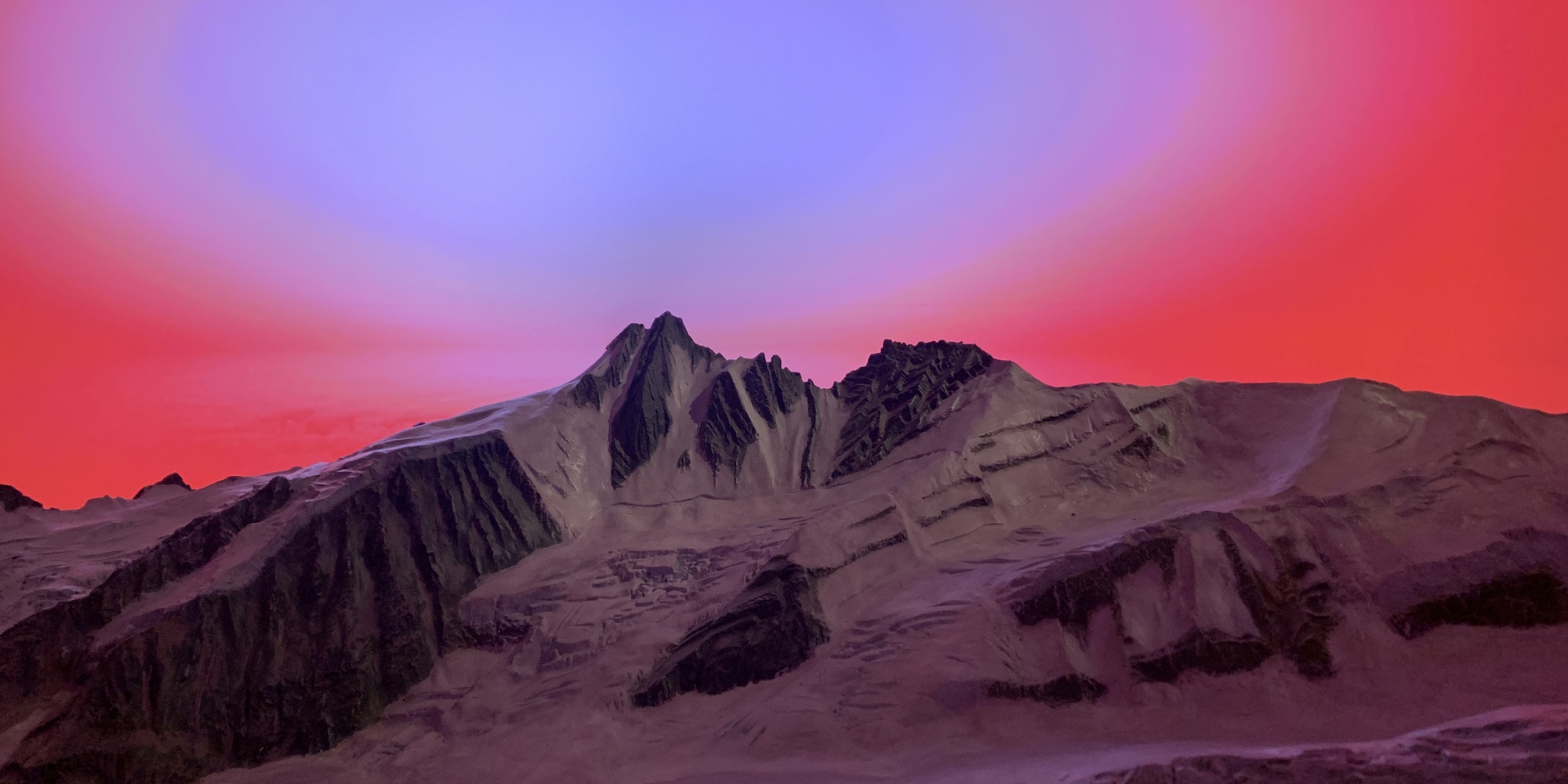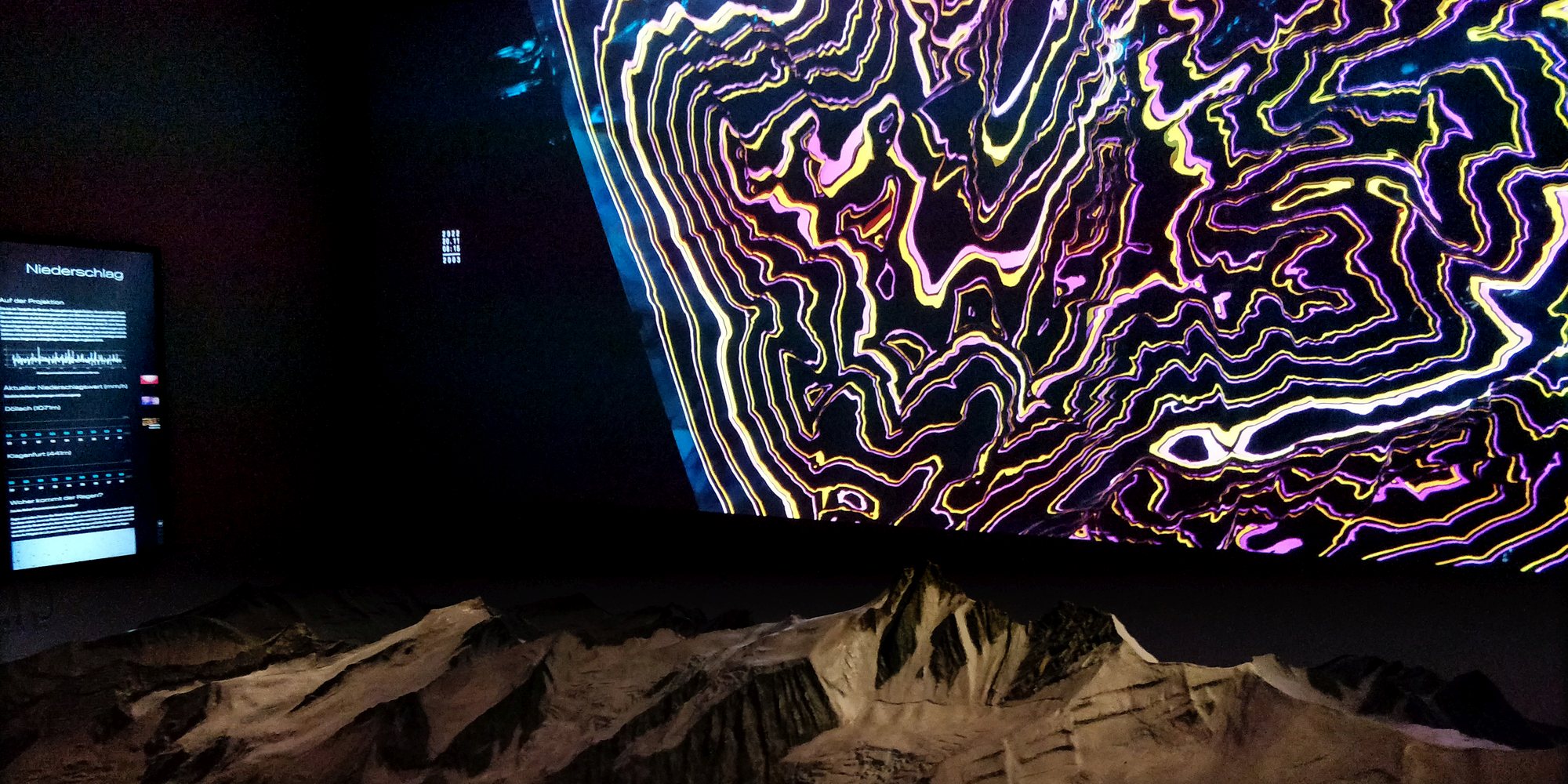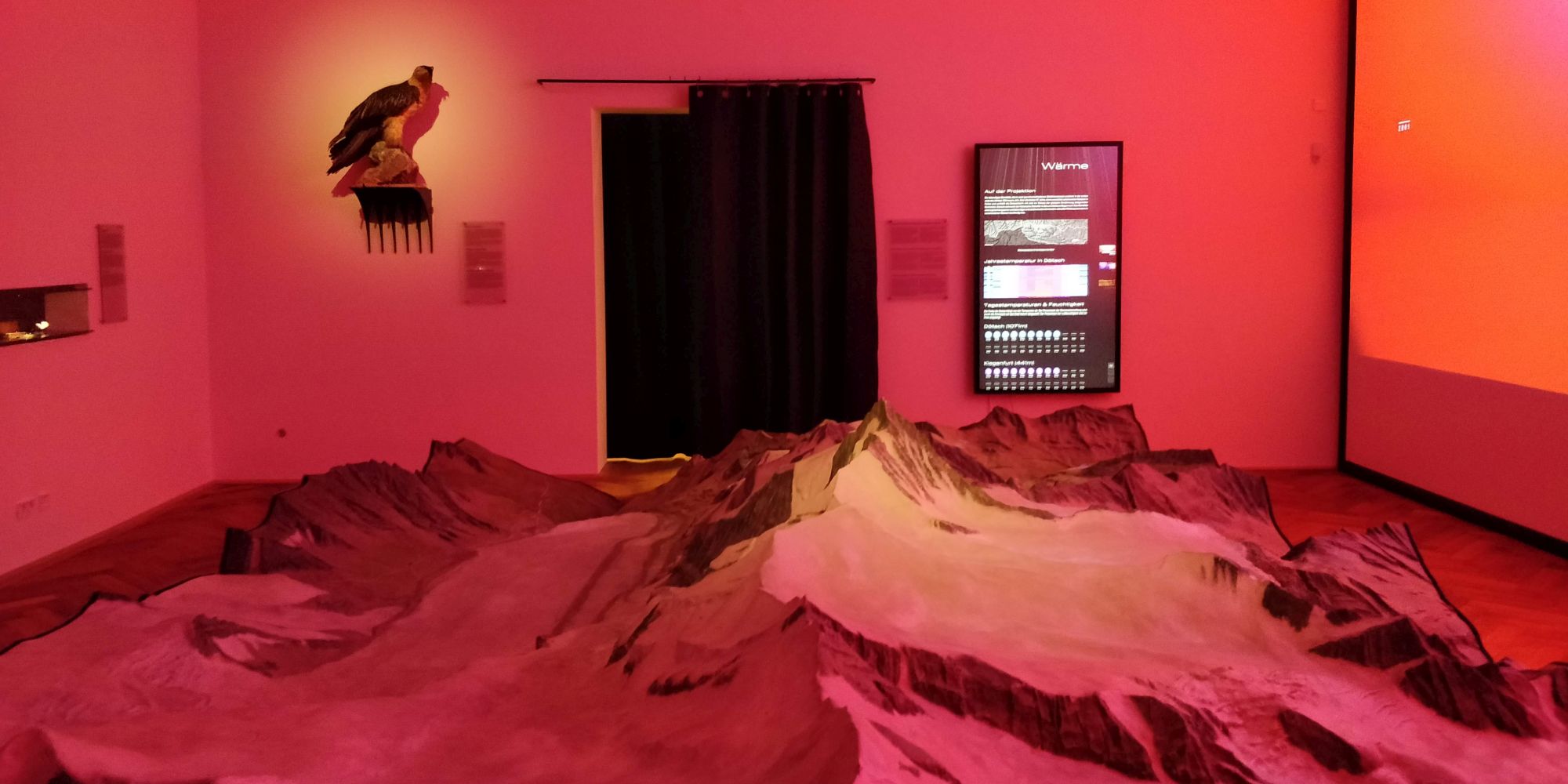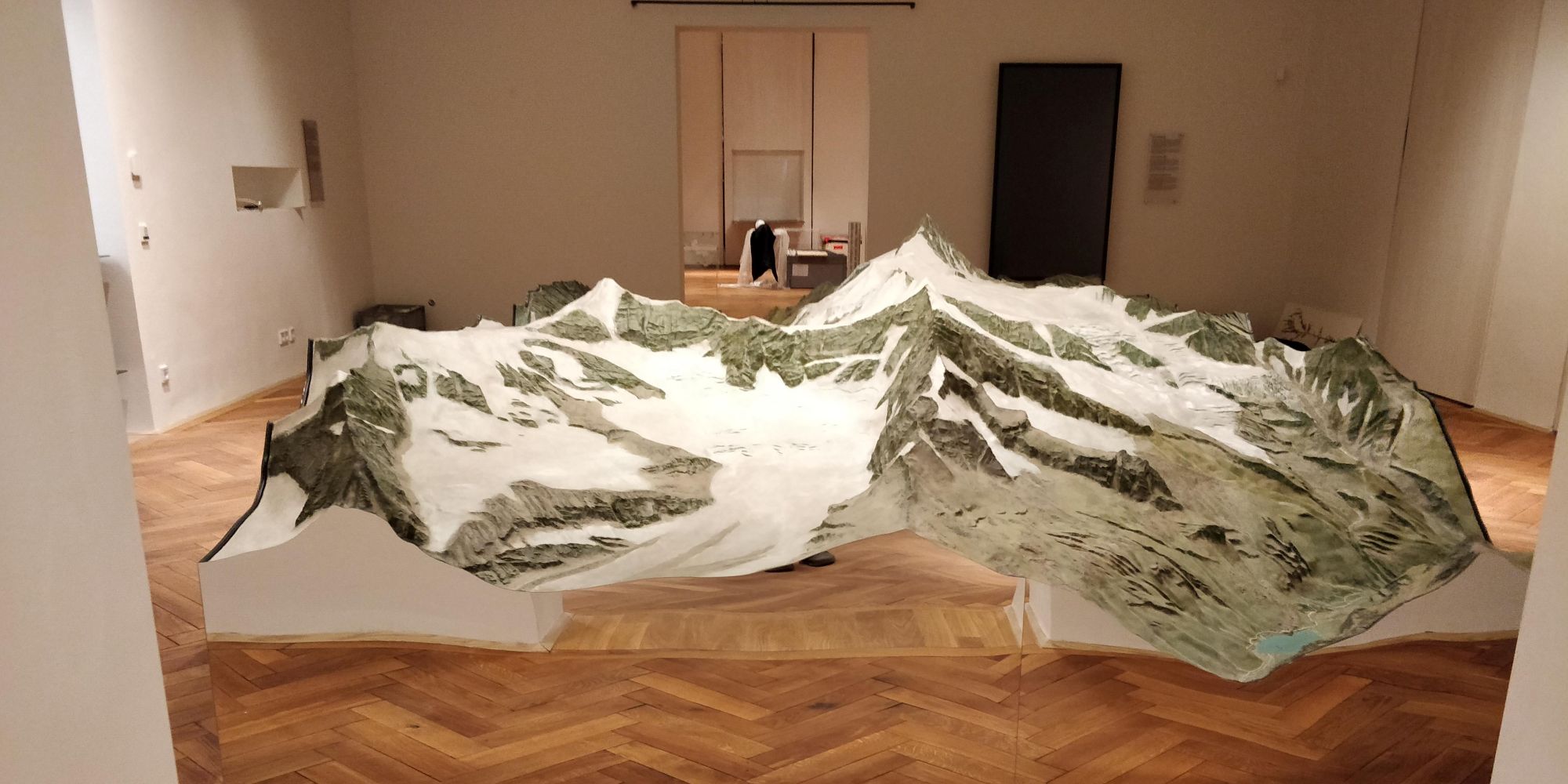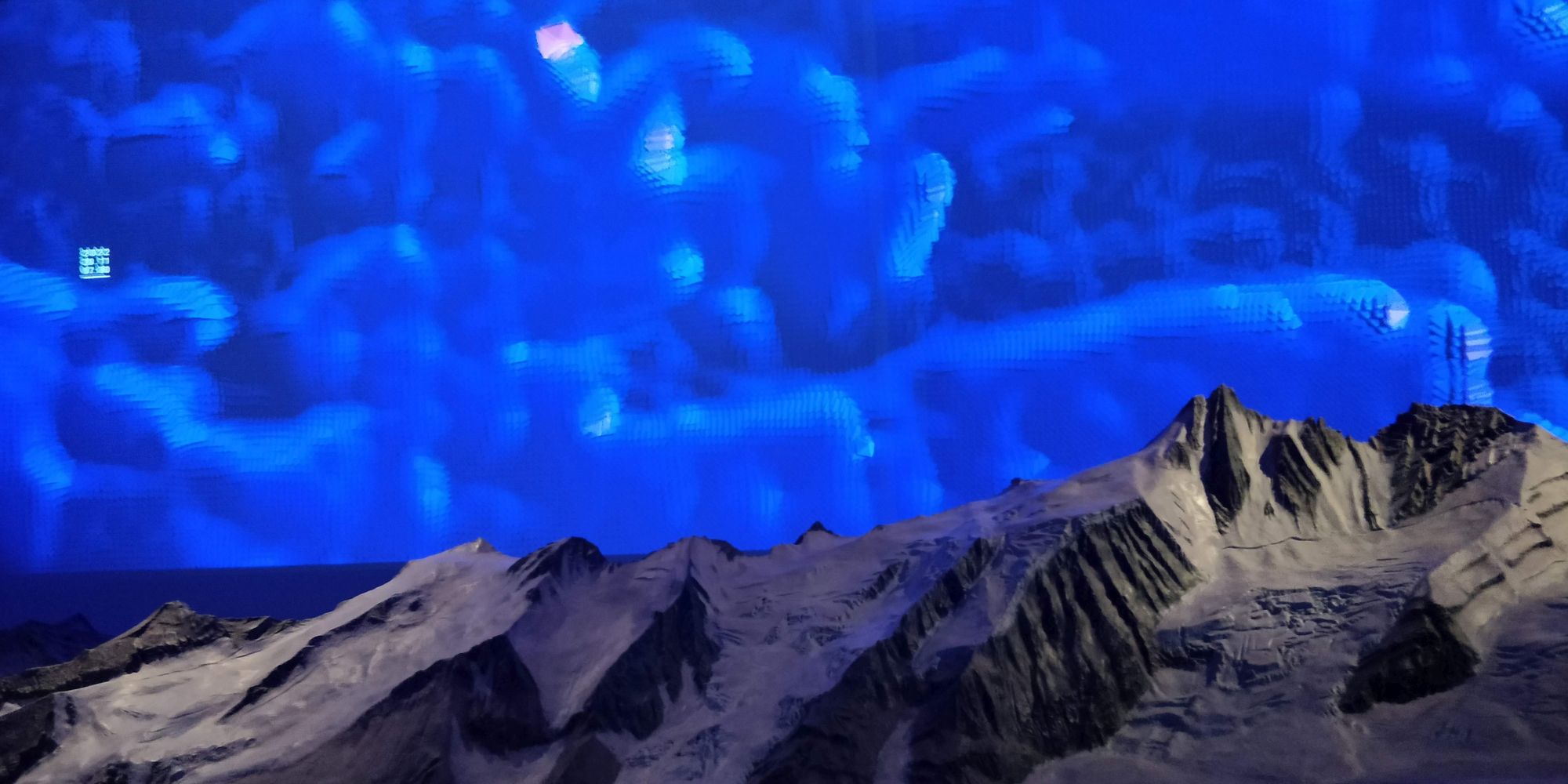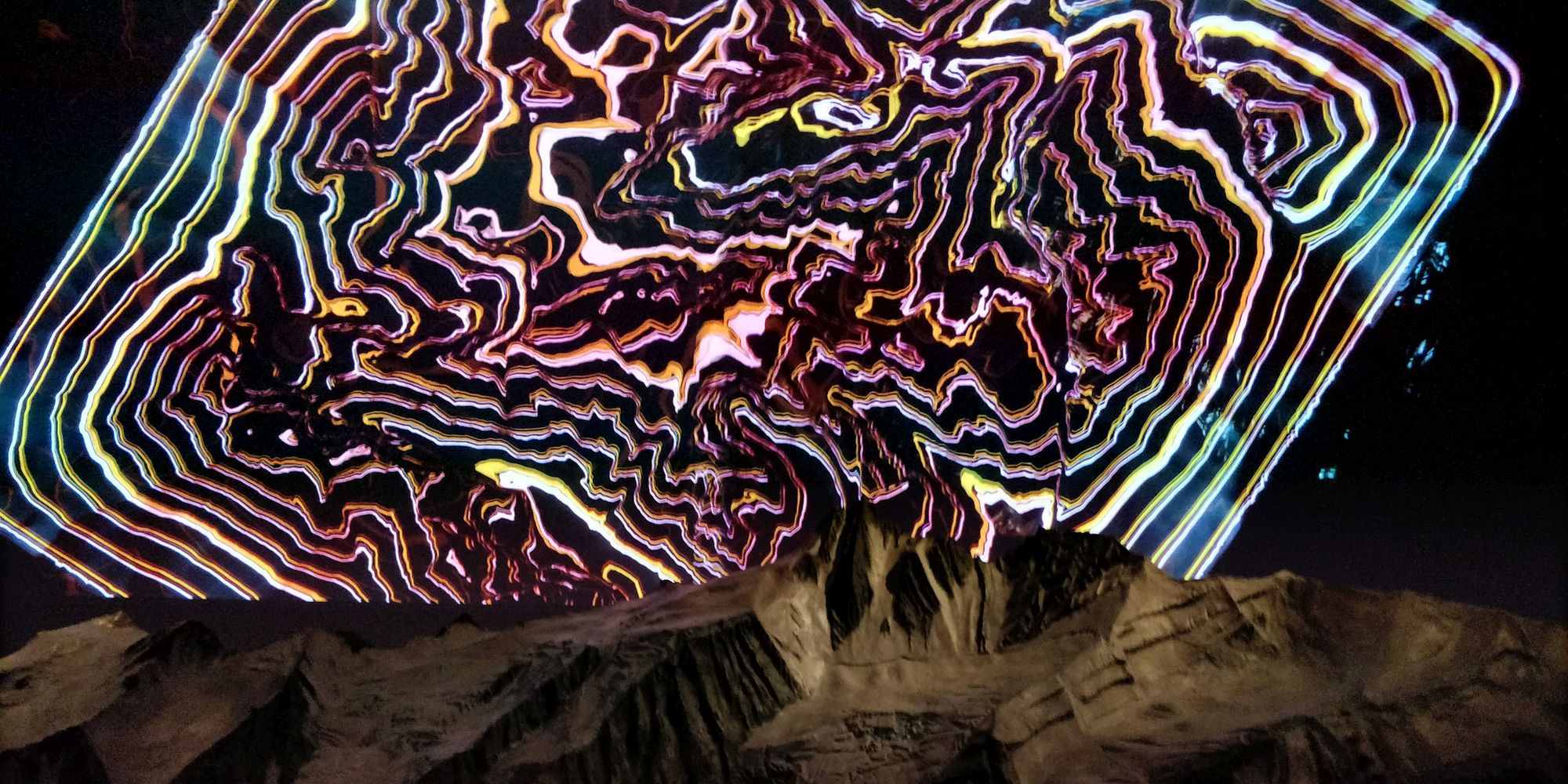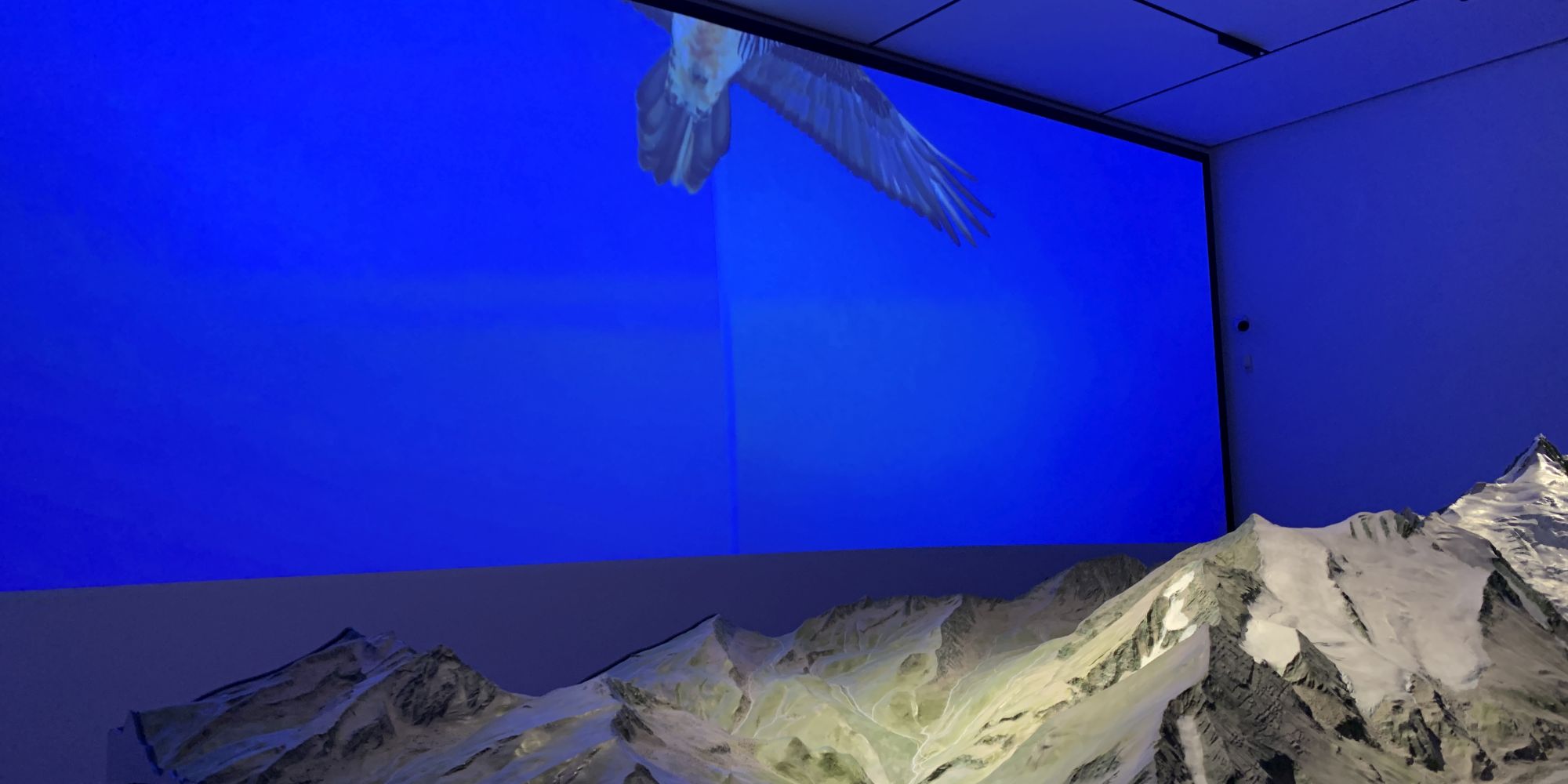Glockner.Luft.Raum is an approx. 15-minute data-based generative sequence that makes the complex connections between global climate change and regional weather kitchen in the Austrian Glockner region visible, audible, and tangible.
For this purpose, weather and climate data are displayed with artistic visualizations on a 9×3 meter wall projection, accompanied by a atmospheric sound that is influenced by current weather data. The project was developed by the Ars Electronica Futurelab for the kärnten.museum in Klagenfurt, Austria, and opened on November 20, 2022, on the occasion of the museum’s redesign.
A historical relief of the Glockner region “floats” in the center of the experience space, defining the room with its three-dimensional presence. In combination with the wall projection Glockner.Luft.Raum including digital sound and a wind harp, an immersive experience is created for the visitors, which makes historical and live weather data as well as the current wind conditions artistically tangible. Four scenes are presented in an approximately 15-minute sequence: “Warmth – A Space of Colors,” “Wind – An Ocean of Currents,” “Precipitation – A Universe of Energy,” and “Flight – A Change of View.” “Warmth”, “Wind” and “Precipitation” represent animated atmospheric images from weather data, while “Flight”, as the contrast and end point of the sequence, accompanies a bearded vulture living in the region on its journey.
The components
The centerpiece of Glockner.Luft.Raum is the 9×3 meter wall projection on which weather and climate data is visually presented in various spatial and temporal contexts: as immersive, generative plays of form and color that change the overall lighting mood in the Glockner space. Next to the projection is an info screen with scientific background and current data in “traditionally” visualized form.
Four loudspeakers on the ceiling also immerse the room in a atmosperic sound that is constantly changing, influenced by current weather data. Above a large rock crystal opposite the projection is a “wind harp” that is played indirectly by the wind: A mechanical mallet reacts to current wind data of the region and lights up the room with ethereal bell sounds about every ten minutes – depending on the wind strength.
The data
Depending on the scene, data occurs in different temporal and spatial scales: “Heat” is determined by historical temperature means in the first part, and by temperature, humidity and cloudiness data of the last hour in the second part. “Wind” is based on the wind currents of the Tauern region of the last hour. “Precipitation” uses historical and current data on precipitation amounts and their deviation from “normal” values. The sound installation reacts to wind measurements and fine dust pollution. The sound harp is primarily determined by the wind strength.
All data has a strong regional reference: most of the weather data comes from Döllach, an inhabited place in the Glockner area, the Infoscreen shows values from Klagenfurt for comparison. Historical and current weather data comes from the open data hub of ZAMG, particulate matter measurements are provided by the province of Carinthia.
The technology
The latest version of the game engine Unity is used for the wall projection and the infoscreen: New features like the High Definition Render Pipeline and Shader Graphs are exhausted with procedural approaches. The sound installation uses the algorithmic sound design tool Max/MSP. The sound harp is a specially designed mechanical construction controlled by a DUET board.
The data is permanently retrieved by a program developed for this purpose, which also calculates values relevant for the visualization (deviations, mean values). This creates a meta-data node that prepares and interprets the “raw data”.
The scenes of the wall projection in detail
Warmth – A space of colors
A living painting that exists in two fundamentally different dimensions of time: In the first, the attribute heat per year, over the last 37 years, sets an unreal seeming horizon in color and envelops the viewer’s eyes with contrasts increasing at the pace of global warming. Afterwards, the historical time-lapse swings into the immediate present: the painting slows down and becomes more vivid at the same time, constantly redrawing itself with minute-by-minute weather parameters in different layers.
Wind – An Ocean of Currents
Wind emerges as an interplay between topography and weather conditions – and becomes visible as a pattern and reaction of the substances it affects. The viewer stands in front of an imagined crystal structure whose oscillations and deformations depict a simulated fluid, which in turn is influenced by current wind measurements in the Glockner area. In this way, the wind is transferred from its original state of a gas flow via a liquid into a solid – and thus traces the variety of forms it produces in clouds, waves, vegetation and finally erosion.
Precipitation – A Universe of Energy
A digital sculpture formed from the topography of the Glockner group, which becomes the object of the forces of (extreme) precipitation events: While the top continuously materializes new layers representing precipitation amounts over the last hour, the two layers of the bottom deform in the entirely different other time dimension of the last 37 years. Extreme amounts of precipitation act as visual violence on the sculpture: Deformations and, in stronger cases, flashes of lightning that eventually envelop the top side as well. In the process, the timelines intertwine, reminding us of the complexity of precisely exploring the connections between momentary events and long-term changes in the global climate.
Flight – A Change of View
A two-minute video of a bearded vulture living in the Glockner region provides a stark contrast and acts as a demarcation and end to the 15-minute sequence. The room is thereby bathed in bright light to allow close viewing of the Glockner relief.
Credits
Ars Electronica Futurelab: Alexandre Bizri, Arno Deutschbauer, Peter Holzkorn, Stefan Mittlböck-Jungwirth-Fohringer, Otto Naderer, Nicolas Naveau, Maria Pfeifer, Erwin Reitböck
kärnten.museum: Alexander Budsky, Claudia Dojen, Roman Fidersek, Wolfgang Giegler, Peter Germ-Lippitz, Martin Stermitz
Video Bartgeier: ScienceVision Filmproduktions GmbH
Daten: ZAMG / Land Kärnten
